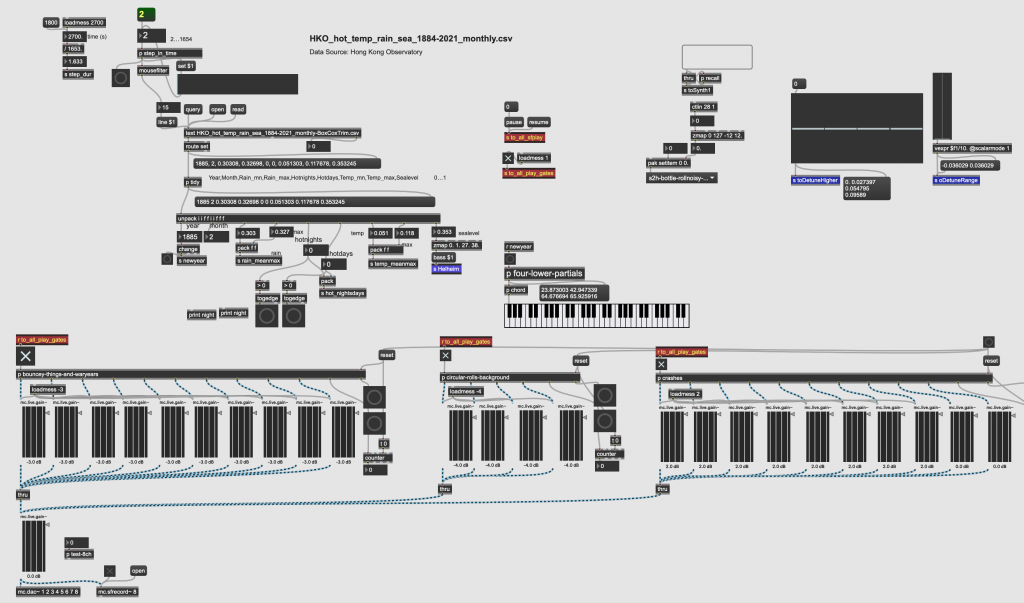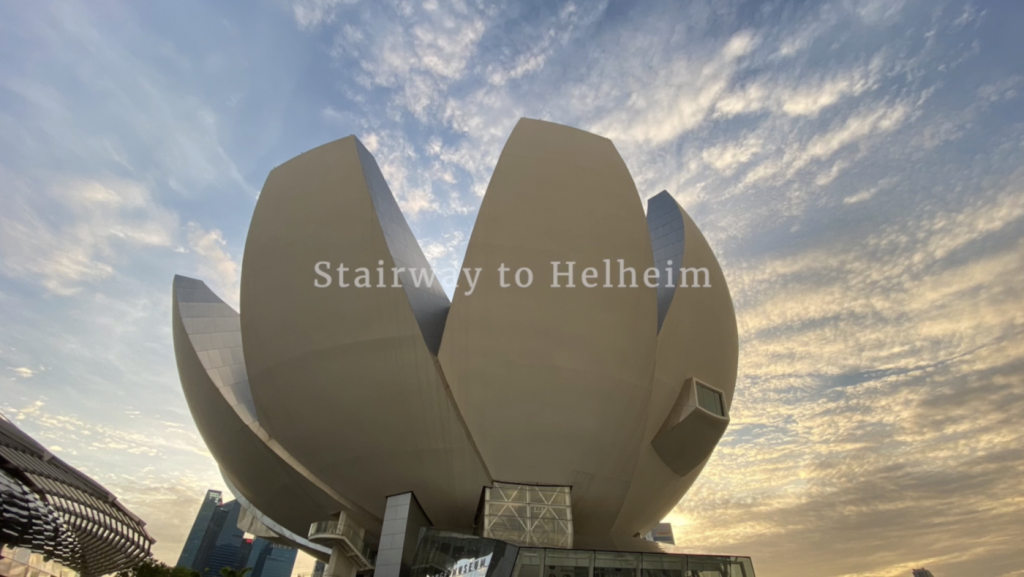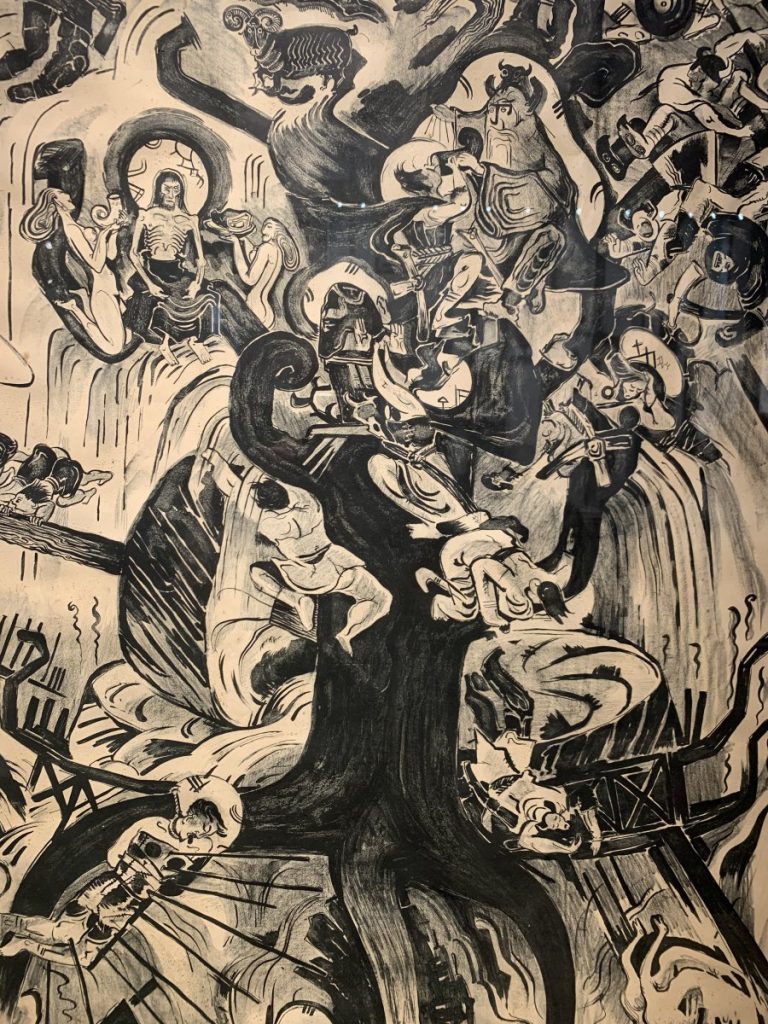Stairway to Helheim
PerMagnus Lindborg (2021/11). Stairway to Helheim. Eight-channel loudspeaker installation: a sonification of 138 years of weather data from Hong Kong.
Keywords
Sonification, multichannel sound installation, climate data, Hong Kong, spatialisation
Funding
Commissioned by ArtScience Museum, Singapore, for Soundislands Exhibition ‘Re:Sound’, 11-23 November 2021.
Exhibitions
- Juried selection for International Computer Music Conference, Hanyang University Museum, Seoul, Korea, 7-13 July 2024.
- SoundLab Concert at China Communication University 中国传媒大学, 27 November 2023.
- DAT/ACT online exhibition at DACA, Data Art for Climate Action, Hong Kong, February-March 2022 (online).
- ArtScience Museum, Singapore, at Soundislands Exhibition ‘Re:Sound’, 11-23 November 2021.
Publications
- Lindborg PM (2022/02). “Stairway to Helheim”. Proceedings of the Conference on Data Art for Climate Action (DACA), Hong Kong & Graz, Austria, 23-27 February 2022.
About the composition
Stairway to Helheim is a 47-minute electroacoustic music composition entirely made with techniques of automatic data sonification. It is a unique work of its kind, creating a large auditory display of Hong Kong’s weather history. The work continues on my previous sonification installations e.g. Locust Wrath (2013), LW24 (2014), LWiOS (2015), Loki’s Pain (2020), created in parallel with empirical research on sonification, e.g. climate data. The new piece explores environmental data and represents it in a radically new spatial context. Stairway to Helheim is a work commissioned by the ArtScience Museum in Singapore, a flagship institution in South-East Asia that is internationally renowned.
The design combines elements that I have been preoccupied with over several years, namely data sonification (of meteorological records), audio programming (cross-synthesis between own samples and unit generators in Max 8), sound spatialisation (8+1 channels), and site-specific loudspeaker installation in acoustically rich and challenging environments. The poetics of the work is also in line with my investigations of perception Setting the experience of an ‘audio journey through history’ as a rather long walk up through a winding staircase echoes classic examples of artists striving against the elements, climbing mountains both physical (like Petrarca did) and metaphorical (think about Spinoza’s dreams, Fuch’s Gradus ad Parnassum,…), as well as my earlier piece Kyager (2021), which deals with the topics of meaning-creation and artistic ambition.
About the sonification
The data for the piece are weather records over 138 years between January 1884 and September 2021, graciously provided by Hong Kong Observatory. A total of 1654 rows of monthly data were rendered to disk (47 min 27 sec, 44.1 kHz 24 bits 8 ch AIF). All data analysis and pre-processing (e.g. Box-Cox transformations) were made in R Studio. The weather records include daily rainfall and temperature, as well as monthly counts of ‘hot nights’ and ‘hot days’, and measurement of the sea level in Victoria Harbour. In the autumatic sonification, ‘hot nights’ are linked to recordings of objects crashing together, and ‘hot days’ are linked to samples of objects falling onto the hard ground. Then, the amount of rainfall is linked to the size and loudness of ‘bouncing ball’ samples, while temperature is linked to the amount of cross-synthesis in the mix of individual samples. By listening to how ‘electronic’ or how ‘concrete’ the sounds are at any given moment, we can understand what the temperature was in the corresponding period of time. Once the listener hears and understands this, it is easy to follow the seasonal shifts as the music goes along, as well as a generally more ‘electronic’ sonic texture over the course of the piece. The latter indicates that temperatures have been rising since the 1800s. Finally, the sea water level is mapped onto the fundamental frequency of the music, and thus the more or less harmonic ‘chords’ that are generated. Since this weather record moves more slowly and is only available from the 1950s, we perceive it as a series of modulations that kick in from the half-way point of the piece. Towards the end of Stairway to Helheim, the harmonic context is tightly wound, and there are more and more ‘crashing objects’ with a synthetic, electronic character.
The general strategy applied to this sonification I have developed over several years. It is described in some detail in a Leonardo article, with a much extended discussion in articles for Frontiers and the Journal of the Audio Engineering Society.
- Lindborg PM (2018, Oct.). “Interactive Sonification of Weather Data for The Locust Wrath, a Multimedia Dance Performance”. Leonardo, MIT Press. https://doi.org/10.1162/LEON_a_01339.
- Lindborg, PM, Lenzi S & Chen M (2023/01). “Climate Data Sonification and Visualisation: An Analysis of Aesthetics, Characteristics, and Topics in 32 Recent Projects”. Frontiers in Psychology, section Human-Media Interaction. doi: 10.3389/fpsyg.2022.1020102.
- Lindborg PM, Caiola V, Chen M, Ciuccarelli P, Lenzi S (2024/09). “Re(de)fining Sonification: Project Classification Strategies in the Data Sonification Archive”. Journal of the Audio Engineering Society. DOI https://10.17743/jaes.2022.0167
Recording the source materials
To create the custom-made sample library, I engaged two SCM students, Manni Chen and Daye Yoon, as assistants for an extensive sound-object recording session at SoundLab, using chairs, bottles, balls, and compact discs. Post-recording edits were made in Logic Pro and then subjected to cross-synthesis and other digital audio transformations using a custom program in Max.






Poetic introduction
(This is a poetic contextualisation for general audiences.) In Norse mythology, Helheim is the lowest part of the afterworld, the world of the dead. It is ruled by the goddess of death, Hel, a daughter of Loki. As visitors tread up the staircase, they are met with sonic objects splashing down – obscenely bouncing yoga balls, a hundred tennis balls, a thousand ping pong balls, crashing CDs. The cascade seemingly never-ending, visitors will nevertheless eventually reach the top floor. Released from struggle, they float serenely into the calm of the top level – is it Parnassum, Helheim, or Purgatory? Or is it another test altogether? (from program note). At a personal level, I have for a long time been inspired by norse mythology, through books and the paintings by Ossian Elgström, who is my great-grandfather.

Ossian Elgström: Yggdrasil, Ragnarök, & Viking Gods Of Asgard (ca 1930)